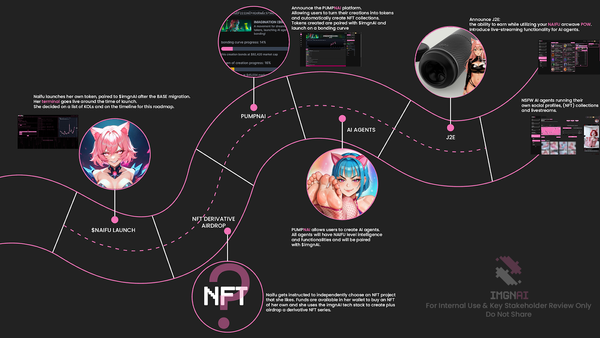Decentralization and Bitcoin Can Help in the Crypto Downturn
Bitcoin and Major Cryptocurrencies Take a Dive After Fed Rate Hike Signals
The crypto market stumbled on Monday as Bitcoin, Ethereum, and most major cryptocurrencies suffered significant downturns. This sell-off comes on the heels of signals from the U.S. Federal Reserve that additional interest rate hikes are on the horizon before year's end. What does this mean for the future of digital assets, and how can decentralization provide stability during times of volatility?
The downtrends were widespread across the board. Bitcoin dropped around 1.5% to $26,033, adding to a 2% loss over the past week. Ethereum fell by 0.7% to $1,580, now sitting 3.3% lower compared to last Monday. Even altcoins like Tron and Toncoin felt the pinch, despite Tron eking out a marginal 0.4% gain.
Overall, the crypto market cap declined by 1.1% to $1.04 trillion. At the same time, trading volumes skyrocketed by over 50% to $22.17 billion. This surge in activity signals increased uncertainty among investors.
So why the sudden pessimism in the crypto sphere?
Last week's Federal Reserve meeting sparked concerns that interest rates could remain elevated for longer than anticipated. This expectation of further rate hikes makes risky assets like cryptocurrencies less appealing. When interest rates rise, investors tend to shift toward safer, more stable securities.
However, this latest crypto sell-off also presents an opportunity to highlight the benefits of decentralized digital currencies. Bitcoin was created as an alternative to centralized financial systems susceptible to monetary policy shifts like interest rate changes. Its fixed supply and decentralized nature provide unique protections against inflation and systemic risks.
True decentralization empowers individuals to control their own financial destinies, unencumbered by the whims of central bankers and governments. While the road ahead may be volatile, projects that embrace decentralization principles can offer reliability during times of uncertainty.
4 Key Developments Behind the Crypto Market Downturn
1. Expectations of Further Fed Rate Hikes
The biggest catalyst was the Federal Reserve signaling additional rate hikes before 2023 to curb inflation. This makes risky assets less attractive.
2. Ethereum's Cancun Upgrade
Ethereum's coming "Cancun" upgrade aims to increase speed and lower costs. Fees recently dropped to $1.15, the lowest since December 2022.
3. Bitcoin Struggling to Maintain Support
After weekend gains, Bitcoin failed to sustain support above $26,500. Its 1.5% drop contributed to a 2% weekly decline.
4. Widespread Losses Across the Board
Besides Tron's marginal 0.4% gain, all top 10 cryptocurrencies by market cap suffered losses over the past 24 hours.
Decentralization Can Empower Individuals Against Volatility
The crypto market will likely continue facing volatility in the short term as global economies wrestle with inflation and uncertainty. However, decentralized digital currencies offer unique advantages over traditional finance during tumultuous times.
Cryptocurrencies like Bitcoin provide fixed supplies unaffected by monetary policy decisions. Their decentralized networks have no central point of failure and empower users to control their own assets. This limits reliance on governments and financial institutions that have proven susceptible to corruption and mismanagement.
In contrast, centralized entities like central banks can destroy wealth through reckless policies like uncontrolled money printing. Runaway inflation has economies around the world suffering right now.
Decentralization returns power from institutions to individuals. While adoption continues growing, crypto's transparency, accessibility, and inflation resistance provide individuals with monetary sovereignty amid financial turbulence.
Though volatility persists, decentralized projects laying strong foundations today will become the bedrock of a more equitable financial system tomorrow.
Historical Parallels Between Crypto Adoption and Past Technological Revolutions
The Internet
Early internet adoption saw volatility before revolutionizing information and communication. Similarly, crypto is experiencing price swings during its evolution into a global financial system.
Personal Computers
Early PCs were expensive and impractical for the average consumer before prices dropped and usefulness increased. Like PCs, crypto may require more maturation before reaching critical mass adoption.
Automobiles
Despite skepticism, automobiles overtook horses as the dominant mode of transportation. Crypto similarly faces doubts but possesses key advantages over outdated financial systems.
Conclusion
How likely is it that further expected rate hikes this year will continue suppressing broader crypto markets?
Additional Fed rate hikes before 2023 are likely to produce ongoing volatility across cryptocurrencies if higher interest rates persist. However, Bitcoin and decentralized projects may decouple from traditional markets over time as adoption expands. While short-term correlations are probable, crypto's structural differences could assert themselves longer-term.
What role will decentralized finance (DeFi) play in crypto's evolution during economic uncertainty?
Decentralized finance will play a crucial role in crypto's growth during periods of legacy finance uncertainty. DeFi protocols offer transparent, trustless platforms for trading, lending, and more. Avoiding centralized intermediaries mitigates counterparty risks and single points of failure. Individuals can control their assets without relying on fragile institutions. DeFi presents a compelling alternative to bank dependencies and systemic risks. Its growth will accelerate as crypto adoption increases.



